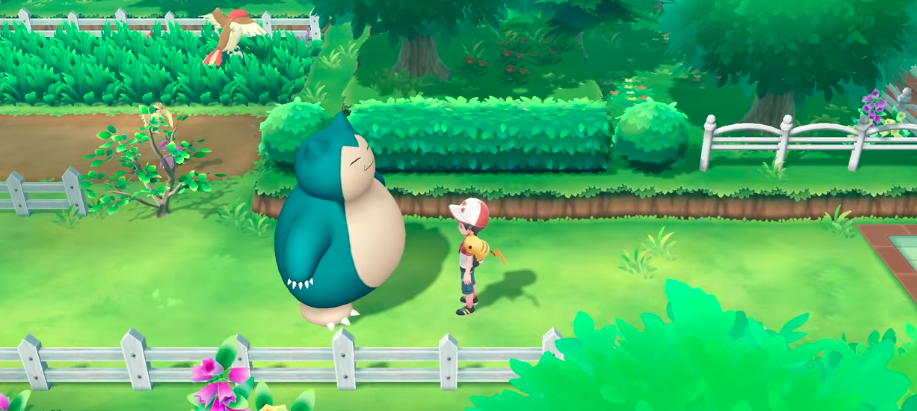One of Nintendo’s oldest and most beloved franchises made its main-series debut on modern consoles earlier this month. Pokémon: Let’s Go, Pikachu! and Pokémon: Let’s Go, Eevee! are revamped versions of the 1998 Gameboy game Pokémon Yellow, the most relaxing journey any trainer has ever experienced.
Let’s Go welcomes players of all ages — and experience — by streamlining the story of the traditional games, making a usually repetitive story fun and new without deviating too far from the game structure we’re used to. At multiple points, players are offered the ability to fast travel or skip parts of the game that were once prolonged or boring.
Battles are also made quicker and easier in this version of Kanto. The player’s partner Pokémon (either Pikachu or Eevee) is extremely powerful; most battles tend to last a very short amount of time. The partner Pokémon learns abilities that replace HM moves (finally!) required to get through the more difficult terrain of the game.
While seeing Pikachu riding a surfboard can feel gimmicky, it’s a lot easier than needing to catch a water Pokémon to have in your team and permanently dedicating one of its move slots to Surf.
Instead of randomly encountering Pokémon in the wild by walking through tall grass, Pokémon actually appear in the overworld now. The player can walk up to them, allowing trainers the ability to easily choose the Pokémon that will make up their team.
Battling wild Pokémon is abandoned, with players instead using the motion controls to throw PokéBalls, similar to the gameplay in Pokémon Go. The motion interaction isn’t perfect, but the game curbs this by flooding trainers with PokéBalls to use.
There’s nothing more thrilling in Let’s Go than spotting a Pokémon in the wild, chasing it down and catching it. Players can select Pokémon to follow them around. You can even ride larger Pokémon like Arcanine and Onix. The ability to interact more with Pokémon, whether they’re wild or caught, is Let’s Go’s most unique and best quality.
Since the Switch only requires use of one joycon controller for Let’s Go, another player can use the other joycon in two-player mode, a first for the Pokémon franchise. This makes catching Pokémon and battling easier, as the players use twice the Pokémon and throw twice the PokéBalls.
The second player has little control over movement or interaction, as the screen is tied to the first player, and they also cannot ride Pokémon. That said, playing the game with two people is a fun new addition, and another feature that sets Let’s Go apart.
The newest Pokémon game is easy — even moreso than previous games, all of which have been geared toward young children. It’s clear difficulty wasn’t a concern for the developers, however, and instead of the game being challenging, it feels much more filled out and explorable. Playing Let’s Go is relaxing and comfortable, and there’s never any stress. The streamlined approach makes the game quick and easy, and playing with a friend is just one of the aspects that makes the game an approachable, fun and chill adventure for trainers of all ages and experiences.



